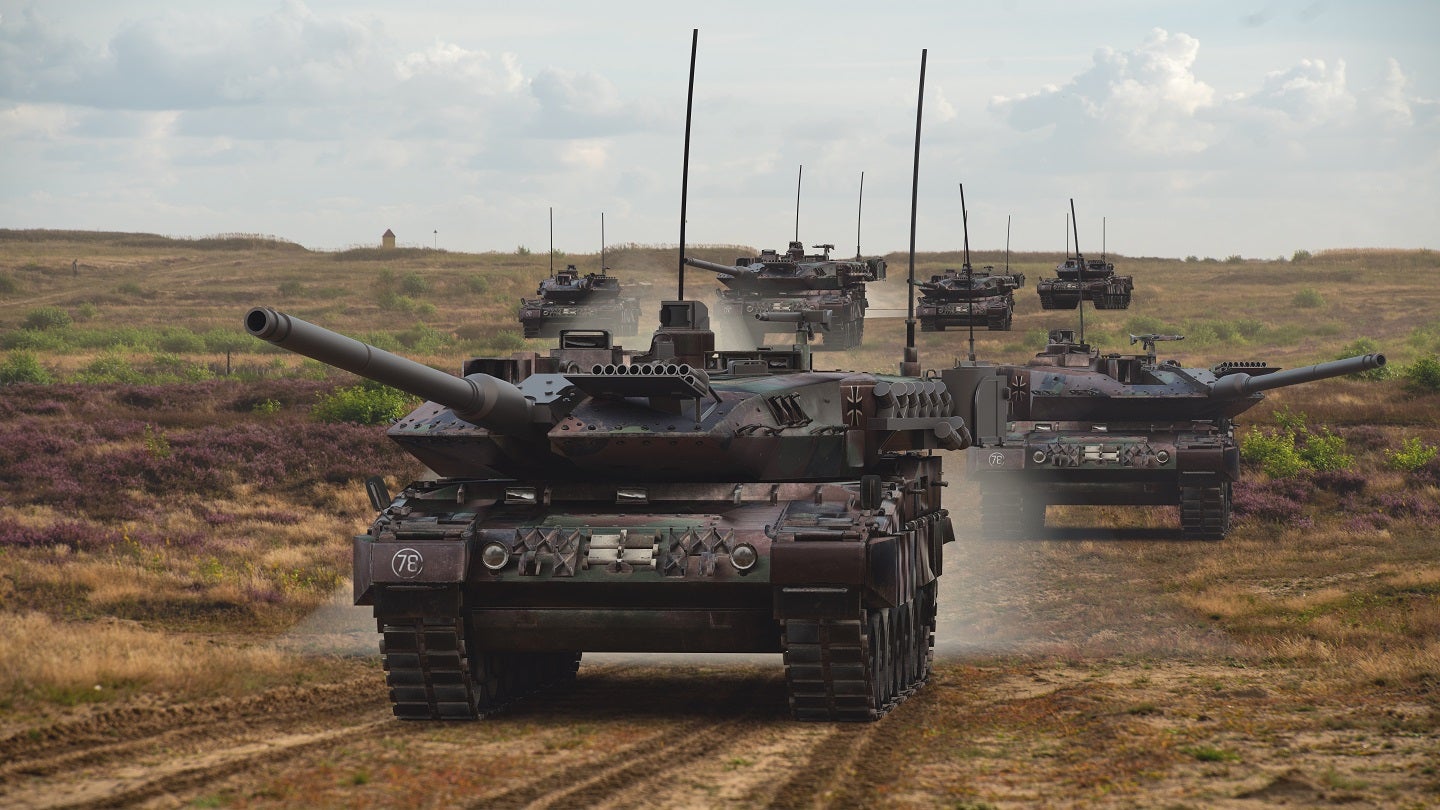
Lithuania intends to procure the Leopard 2 main battle tank (MBT) for its first ever tank fleet.
The Minister for National Defence, Arvydas Anušauskas, announced the selection over social media on 28 July. The Baltic nation’s decision comes just after it hosted the 2023 Nato summit in Vilnius, where the military alliance inducted Sweden and pledged greater support for Ukraine in its war against invading Russian forces.
Krauss-Maffei Wegmann (KMW), a Munich-based defence supplier, originally manufactured the Leopard 2 MBT. The Leopard 2 is a successor to the successful Leopard 1.
In June 2010, KMW unveiled its Leopard 2A7+. The German Army successfully tested and qualified the MBT, which later became widely adopted across Europe. GlobalData forecasts global spending on the Leopard 2A7 to grow from $96m (€87.3m) to $146m (€132.8m) in the next decade. Its main features include a modular protection kit, improved sustainability and increased mobility.
What is significant about Lithuania’s Leopard 2 procurement?
Lithuania’s decision to add a main battle tank fleet to its armed force for the first time will help to secure Nato’s eastern flank.
Alone, Lithuania’s military maintained security with minimal effect: GlobalData intelligence tell us its land-based fleet comprised 20 multi-purpose Humvee units and 551 armoured personnel carriers (procured within the last two decades). The country’s Ministry for National Defence (MoND) has lately received more Joint Light Tactical Vehicles under a deal for 500 units and medium range National Advanced Surface-to-Air Missile Systems in a $10.7m deal.
The country has naturally been reliant on its Nato partners. Germany recently deployed 4,000 troops to Lithuania, which demonstrates the nation’s reliance on Nato.
This is a reasonable strategy and force structure given Lithuania’s relatively small economy.
From this perspective, Lithuania’s Leopard 2 procurement tells us that its contribution to Nato security has grown significantly. GlobalData projects the nation’s defence spending to grow to $2.2bn in 2027, from $1.6bn in 2022. This follows ongoing historical growth, with the defence budget registering a positive compound annual growth rate of 8.6% between 2018 and 2022.
Aerospace and Defence analyst at GlobalData, James Marquess, pointed out that “up until now [Lithuania] had not been operating MBTs at all. So choosing a platform already well established in Nato eases training and induction, and as they aren’t likely to build a big force they can easily operate alongside other Nato Leopard formations.”
Why did Lithuania select the Leopard 2?
Lithuania’s MoND explained its rationale for the Leopard 2 procurement to Army Technology.
“The main evaluation criteria used to make the decision were price and maintenance costs, operating environment, mobility, protection, adaptability, protection, firepower and connectivity.
“Although the delivery times for all the tanks evaluated are similar (4-6 years), the Leopard and Abrams have simpler and faster acquisition methods than the others. The Leopard and the Abrams are similarly priced, but the big advantage of the German tanks is their significantly lower maintenance costs.
“The proliferation of Leopard tanks in Nato countries has been evaluated, which facilitates the maintenance of the tanks, and the ease of obtaining spare parts for these tanks through the Nato Support and Procurement Agency.
“Currently, the Lithuanian Armed Forces already have German weapon systems in their arsenal: the PzH2000 artillery, the PKM Boxer (Wolf), and the BPz2 combat evacuators. Leopard tanks would be the most compatible with the military equipment currently in use in the Lithuanian Armed Forces.
“The German-led Nato Forward Presence Battalion Group, which is deployed in Lithuania and regularly conducts military training and exercises with Lithuanian troops, is equipped with Leopard tanks. Equipping the Lithuanian Armed Forces with Leopard tanks would ensure a high level of interoperability and compatibility with this Nato unit and, in the future, with the German brigade permanently stationed in Lithuania.”
Lithuania’s MoND declined to comment on the cost of the order, the specific Leopard 2 variant it will acquire and the size of the fleet.




